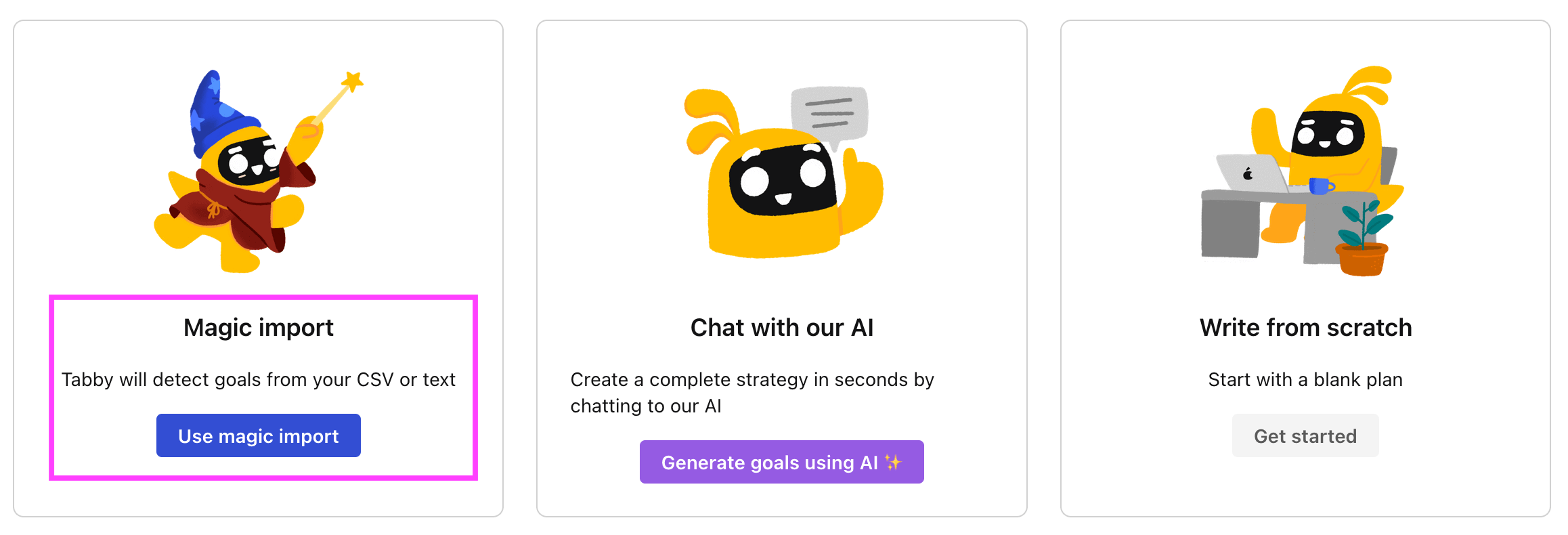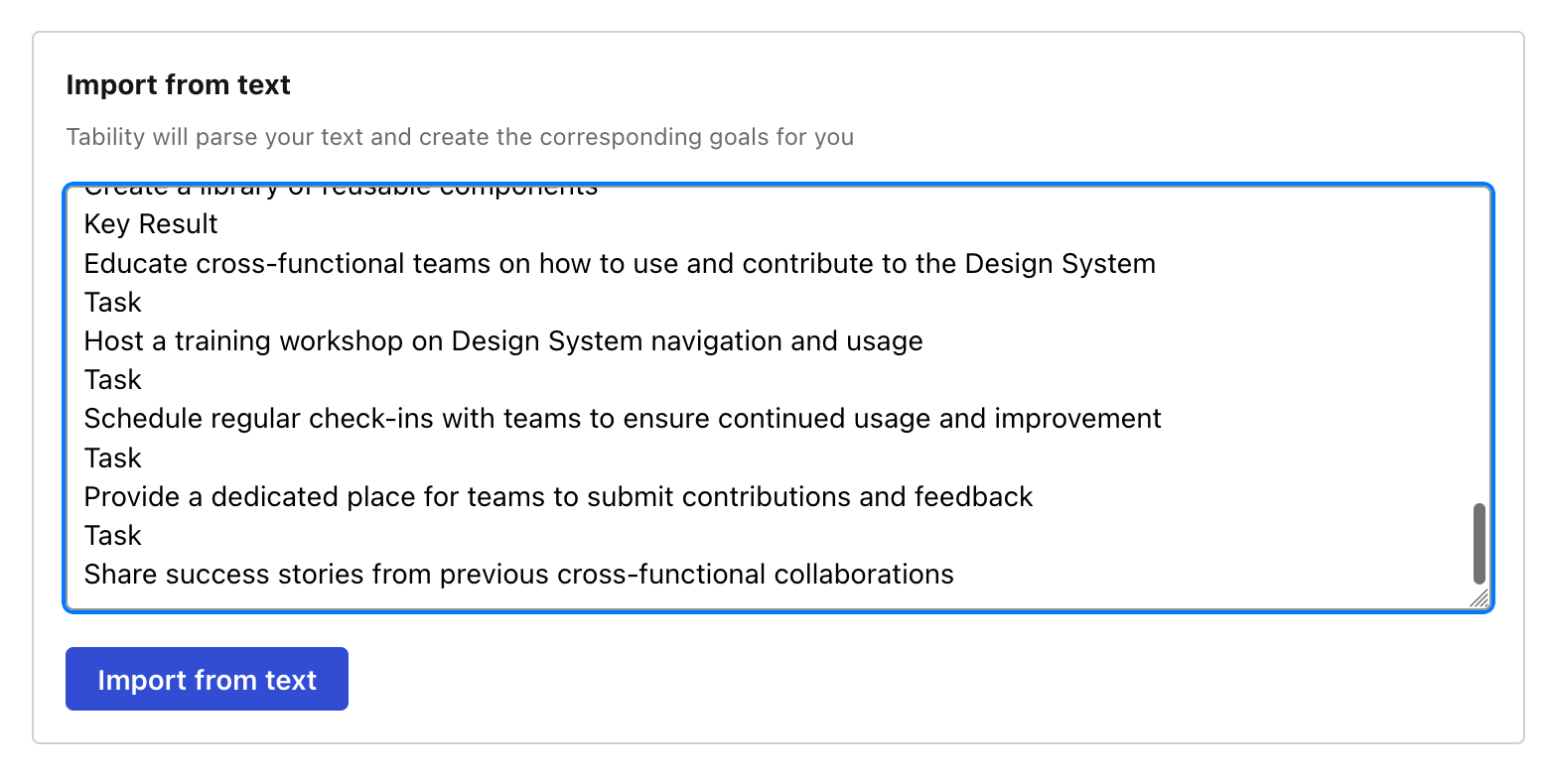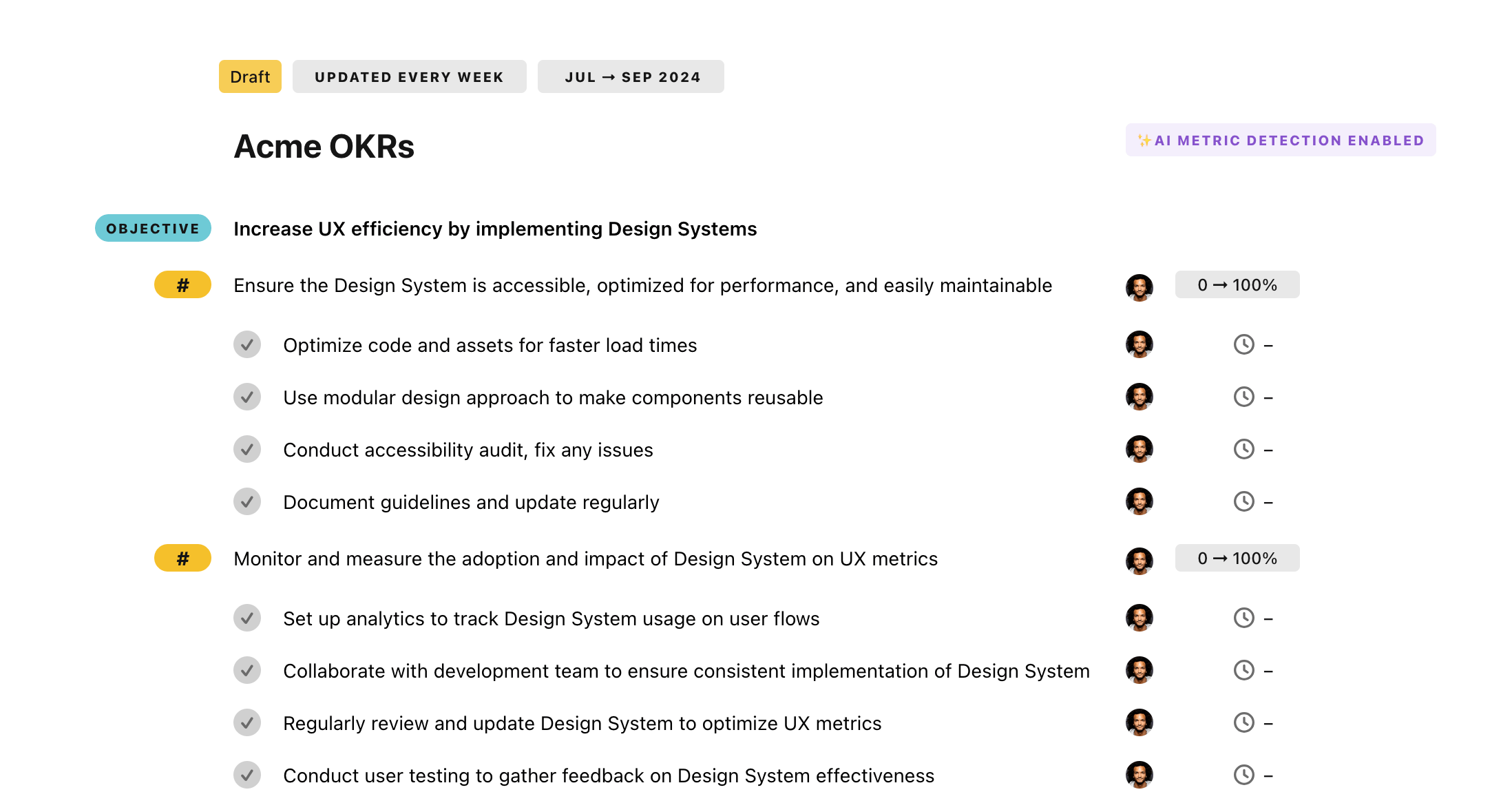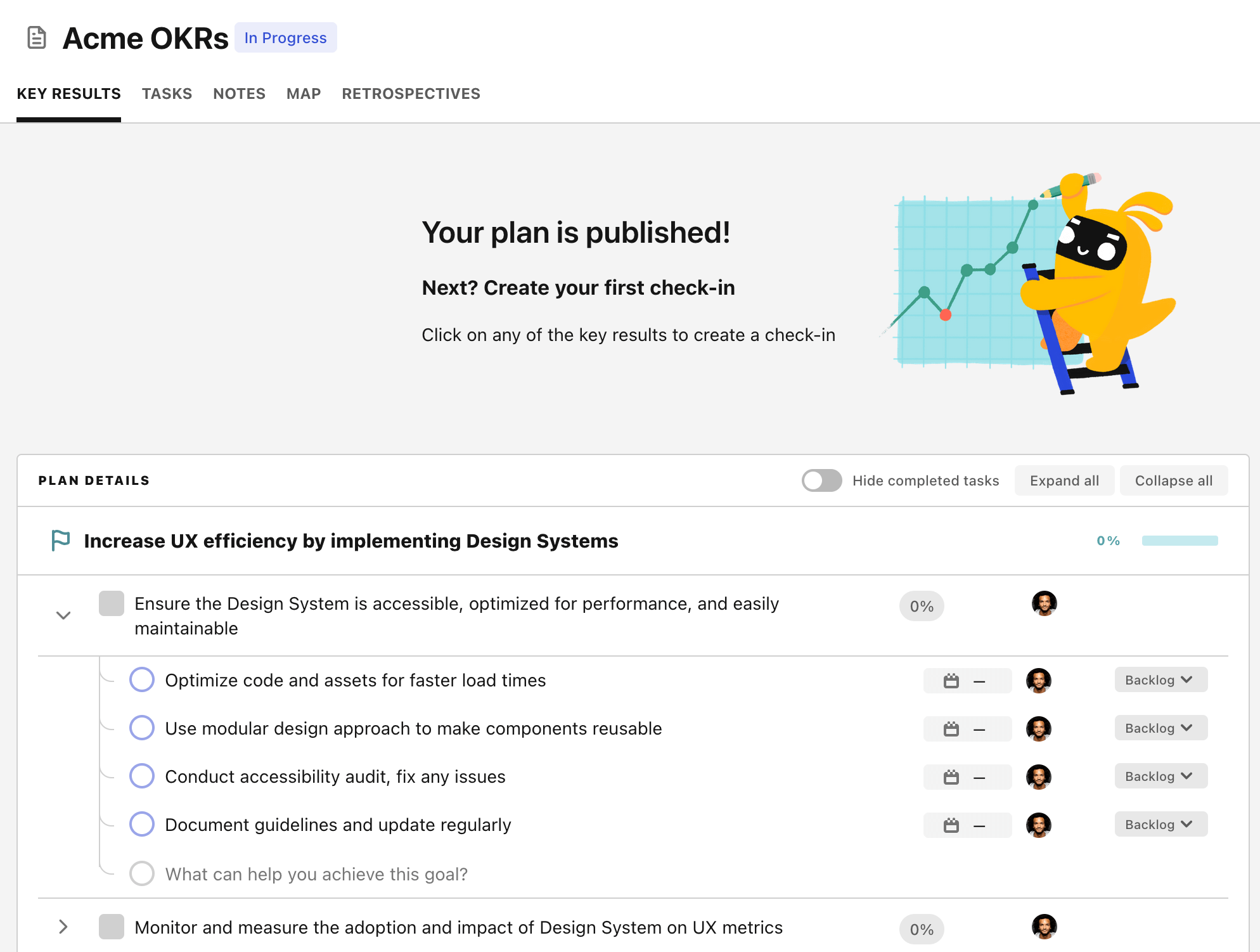OKR template to improve development team productivity
Your OKR template
ObjectiveIncrease development team productivity
KRReduce average time taken to complete development tasks by 20%
Provide developers with necessary training and resources to enhance productivity
Implement agile development methodologies and prioritize tasks based on importance
Encourage open communication and collaboration among team members to expedite task completion
Identify bottlenecks in the development process to streamline efficiency
KRImprove unit test coverage by 10% for critical components
KRReduce the number of production bugs reported by customers by 25%
Conduct regular code reviews to identify and fix potential bugs before deployment
Implement automated unit testing for critical components and frequently executed code
Increase the frequency of software releases to address and resolve issues more promptly
Improve communication channels with customers to encourage reporting and capturing of bugs
KRIncrease code review completion rate by 15%
Schedule regular team meetings to discuss and address code review concerns
Provide comprehensive and concise code review guidelines for reviewers
Encourage timely and constructive feedback during code review discussions
Implement a clear and streamlined code review process
How to edit and track OKRs with Tability
You'll probably want to edit the examples in this post, and Tability is the perfect tool for it.
Tability is an AI-powered platform that helps teams set better goals, monitor execution, and get help to achieve their objectives faster.
With Tability you can:
- Use AI to draft a complete set of OKRs in seconds
- Connect your OKRs and team goals to your project
- Automate reporting with integrations and built-in dashboard
Instead of having to copy the content of the OKR examples in a doc or spreadsheet, you can use Tability’s magic importer to start using any of the examples in this page.
The import process can be done in seconds, allowing you to edit OKRs directly in a platform that knows how to manage and track goals.
Step 1. Sign up for a free Tability account
Go tohttps://tability.app/signup and create your account (it's free!)
Step 2. Create a plan
Follow the steps after your onboarding to create your first plan, you should get to a page that looks like the picture below.

Step 3. Use the magic importer
Click on Use magic import to open up the Magic Import modal.
Now, go back to the OKR examples, and click on Copy on the example that you’d like to use.

Paste the content in the text import section. Don’t worry about the formatting, Tability’s AI will be able to parse it!

Now, just click on Import from text and let the magic happen.

Once your example is in the plan editor, you will be able to:
- Edit the objectives, key results, and tasks
- Click on the target 0 → 100% to set better target
- Use the tips and the AI to refine your goals
Step 4. Publish your plan
Once you’re done editing, you can publish your plan to switch to the goal-tracking mode.

From there you will have access to all the features that will help you and your team save hours with OKR reporting.
- 10+ built-in dashboards to visualise progress on your goals
- Weekly reminders, data connectors, and smart notifications
- 9 views to map OKRs to strategic projects
- Strategy map to align teams at scale